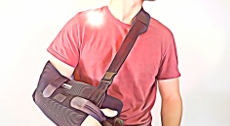
The shoulder is an incredibly mobile joint, allowing for a wide range of motion. This flexibility is made possible by a complex network of muscles and ligaments that connect the shoulder to the rest of the body. Unlike many other joints, which rely on the shape and structure of bones and ligaments for stability, the shoulder sacrifices some of that stability to achieve greater movement. As a result, it’s more prone to dislocations.
What Is a Shoulder Dislocation?
A shoulder dislocation happens when the head of the upper arm bone (the humerus) slips out of its usual position within the shoulder socket. In some individuals, naturally loose joints can make dislocations more likely, even with minor force. For others, a dislocation typically requires significant trauma or injury.
Dislocations can occur in various directions, but the most frequent type is an anterior (forward) dislocation. This often happens when the arm is lifted and pushed backward into a position similar to giving a “stop” hand signal.
What Should You Do If It Happens?
The initial dislocation is often the most painful and serious. Sometimes the shoulder may realign on its own (called spontaneous relocation), but often medical intervention is required. It’s crucial that only a qualified healthcare provider attempts to reposition the joint, as they need to identify the type of dislocation accurately—often with the help of an X-ray—before proceeding.
In some cases, a small bone fracture can occur during the repositioning process, which is why professional care is essential to avoid further injury.
Role of Physiotherapy
After a shoulder dislocation, physiotherapy plays a key role in recovery. Your physiotherapist will guide you through a plan to protect the joint while damaged tissues begin to heal. Once the initial healing has taken place, a targeted strengthening and stabilization program can be introduced. These exercises help build muscle support around the shoulder, reducing the risk of future dislocations.
A Final Note
This information is intended for educational purposes and should not replace professional medical advice. Always consult a qualified healthcare provider for a proper diagnosis and treatment plan tailored to your needs.
